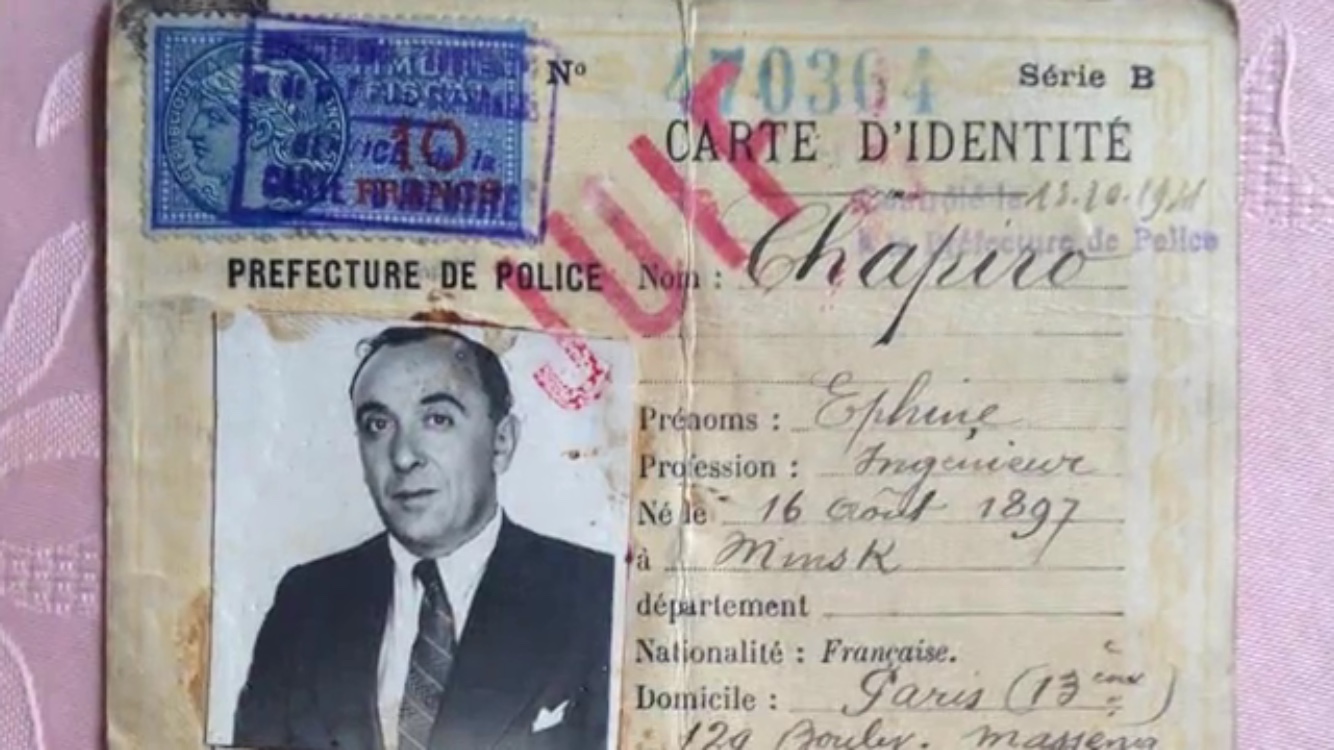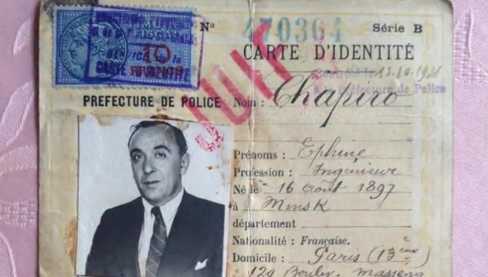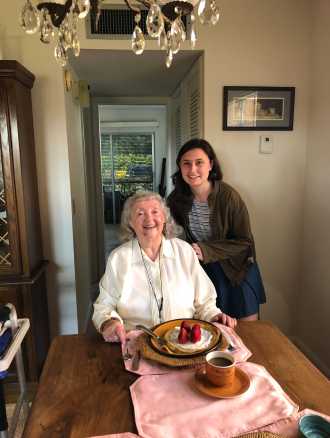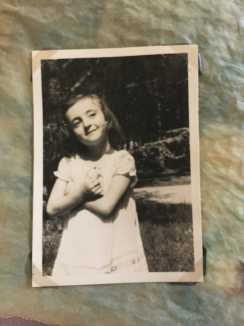Digital map of Nazi-occupied Paris shares forgotten stories

 Ephim Chapiro
Ephim Chapiro The sense of security was premature; Chapiro was detained and loaded onto a train. Somehow, he was able to hastily scrawl a brief note and have it delivered to his wife, which likely saved her life: “Go away and hide.” Then the train departed – it was the last convoy from France to Auschwitz-Birkenau. He died a few months later during a death march.
Although the USC Shoah Foundation’s Visual History Archive is typically thought of as a way to preserve the stories of people who survived the Holocaust, a professor at the University of Pennsylvania has found a way to use the Archive to broaden the scope of memory to include not only survivors but also people – like Chapiro – who perished.
Mélanie Péron, a French literature professor – who in 2016 was the Rutman Fellow for Research and Teaching at USC Shoah Foundation’s Center for Advanced Genocide Research – has her class use data collected from testimonies and other sources to create a digital, multi-layered map of Paris during the German occupation.
Made possible by financial support from Lori Rutman Fife – a member of USC Shoah Foundation’s Next Generation Council – the project, when complete, will overlay the digital map of occupied Paris in 1940 with clips of testimony, photos and other artifacts that tell the stories of French Jews who lived or hid in areas that correspond with the marked locations on the map. Many never survived to tell their own stories, but Péron and her students have been working to bring them to light.
“Beyond locating the key places of the Nazi machinery and the collaborationist monster, I also wanted the map to become the space where the stories of individuals who vanished recovered their voices,” Péron said at a recent lecture describing the class.
Chapiro and his family are plotted on this “visual history map,” which has yet to be made accessible to the public. (The family’s home was in Paris, but they fled to Lyon.)
Chapiro’s story was tracked down by his great granddaughter, Kyra Schulman, a graduating senior at the University of Pennsylvania who took the class last year and worked for Péron as a research assistant this year. Kyra – who majored in French and history, and next year will study Paris topogtraphy during World War II as a grad student at Oxford University – said the class was life-changing.
 Kyra Schulman and her grandmother, Yvette Schulman.
Kyra Schulman and her grandmother, Yvette Schulman.“It’s one of the most amazing classes I’ve taken,” Kyra said. “This class was actually perfect for me, on both an academic level and a personal level.”
The project affixes to the map many forgotten stories, creating a digital monument that adds the dimension of place to the memorial.
“Which is pretty important, especially given how in France, the story of French Holocasut survivors and of the Holocaust in France hasn’t always had a very central place,” Kyra said.
On a personal level, the class has deepened Kyra’s relationship with her grandmother, Yvette Schulman, whose father – Chapiro – was deported to Auschwitz on her 12th birthday, leaving her emotionally scarred for life.
“In my family it’s been a little taboo to talk about the Holocaust,” Kyra said. “I was constantly told when I was younger: ‘Don’t ask grandma about this. She will get upset, she will yell, she will lose it.’”
Kyra’s interest in her grandmother’s Holocaust story actually predates her involvement with the college class. When she was 16 – while attending a high school in Washington D.C. -- she found a sly way to bring up the topic with her grandmother Yvette, who lives in Florida.
Kyra wrote her grandmother a letter, and in it, asked a coded question: “Did you play violin during the war?”
Yvette intuitively caught the drift of the question, touching off a longstanding correspondence that centered on her experience during the war. They began sending each other a handwritten note every week – usually in French – a practice that continues today.
Their letters also discuss more quotidian concerns.
“She’ll ask me ‘how is school,’ ‘is dad still running,’ ‘how’s your sister’ – it’s not all the Holocaust, but that definitely is a big part of our relationship,” Kyra said.
Over the years, her grandmother has sent more than 300 letters, as well as documents and photos pertaining to the war.
“We’ve become very close,” Kyra said.
Kyra used the documents, stories and photos from her grandmother for the class project.
She learned that Yvette narrowly escaped the mass detention of 13,000 Parisian Jews during a single week in July of 1942. They were held at an athletics stadium near the Eiffel Tower before being sent to Auschwitz.
More details about what happened to the family were revealed to Kyra by USC Shoah Foundation’s testimony of her aunt – Eva Bluestein (and Yvette’s cousin) -- in the Visual History Archive.
Bluestein says that Ephim Chapiro’s wife, Rosa Chapiro, suffered a mental breakdown after his death. Before the war, Ephim had wanted to move to Australia, but Rosa convinced him that the family should stay put.
“She never got over these guilt feelings,” Bluestein said of Rosa. “She really lost her mind, became paranoid and schizophrenic after the war.”
 Yvette Schulman as a child.
Yvette Schulman as a child.Kyra attached to the digital map several documents and photos in the Paris neighborhood where her grandmother’s family had lived. Although the online map hasn’t gone live, Kyra has access to it on her computer, and recently showed it to her grandmother.
When she clicked on her childhood home in the 13th District of Paris, Yvette saw her father’s ID card, with the word “Jew” stamped in red; and a photo of herself as a girl of 7 or 8, with a telltale mark where the yellow star had been ripped out of her dress. She also saw a 1942 clipping from a Paris newspaper focusing on her family that mentions how, from then on, the Chapiros and other Jews of Paris would no longer be considered French.
“She got emotional,” Kyra said. “She was glad that something like this had come out. People were talking about this – that this was important to people.”
Kyra added: “She was very, very close with her father – the one who was sent to Auschwitz. And for her to see him on the map – she thought that that was a really great way to remember him.”
Fife, a member of USC Shoah Foundation’s Next Generation Council and a supporter of the program, said she is delighted to see the fellowship changing the lives of students at Penn.
“It has also helped to fulfill my primary goal in establishing the Fellowship in memory of my parents, who were both Holocaust survivors, which is to never forget," she said.
Like this article? Get our e-newsletter.
Be the first to learn about new articles and personal stories like the one you've just read.